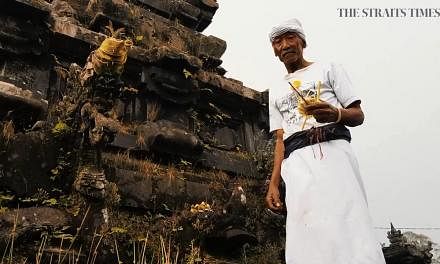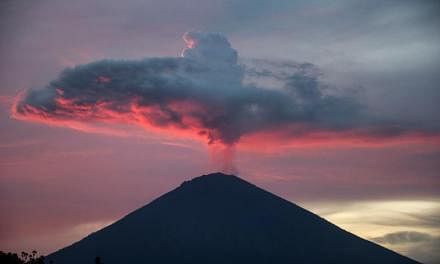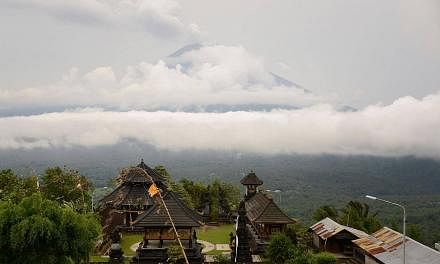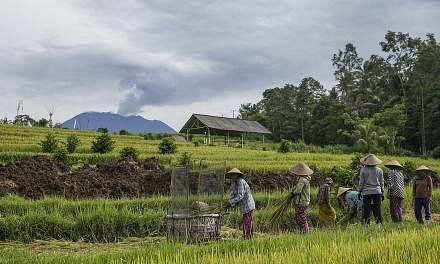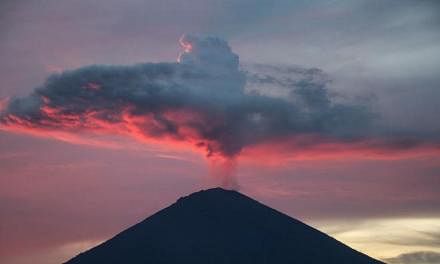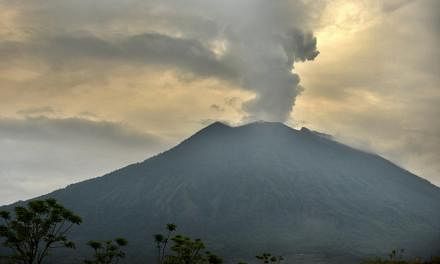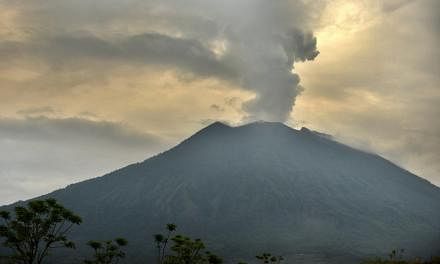Bali's Mount Agung volcano erupted yesterday, spewing a column of ash up to 4,000m into the atmosphere and forcing the authorities to ban flights over the area.
The island's airport 70km south of the volcano remains open but flights have been disrupted, said officials.
In the most powerful series of eruptions so far, the volcano erupted three times yesterday morning, spreading ash as high as 4,000m, said a spokesman for national disaster management agency BNPB, Dr Sutopo Purwo Nugroho.
In a Twitter message yesterday afternoon, he said the nature of the latest eruptions had changed.
"Since last night the eruption has been a magmatic-type eruption, not phreatic," he said, referring to the switch from a steam-driven eruption to one with magma.
"That's what has caused the eruption to continue to produce smoke and dark volcanic ash."
No lava is ejected during phreatic eruptions, which are a precursor of volcanic activity. Such eruptions involve only steam and ash.
Volcanologist Simon Carn said on his Twitter account: "Summit glow at #Agung indicates magma likely at or near surface. Satellites also detected thermal anomalies overnight."
The ash cloud is moving to the south-east of the crater, heading to nearby Lombok, said Dr Sutopo. Flights to and from Lombok have also been affected.
The centre of volcanology and geological hazard mitigation, PVMBG, raised the volcano observatory notice for aviation to the highest level, he added. Planes were banned from flying above the volcano territory.
PVMBG said on its website that the colour code for aviation has been increased from orange to red, the highest.
" Volcano Observatory Notice for Aviation colour code red means only certain areas are affected. It does not mean the airport must close," Dr Sutopo told The Straits Times.
Flights at Bali's main Ngurah Rai airport resumed yesterday after several airlines opted to cancel flights last Saturday night, said airport information officer Wayan Ari.
There were some cancellations yesterday, said fellow airport information officer Rahayu, who goes by one name. She said earlier yesterday that at least three international flights and one domestic flight, all arrivals, had been cancelled.
On the neighbouring island of Lombok, the airport was closed at 5.15pm local time.
"Flight routes to Lombok are blocked by volcanic ash, so access from all directions is not possible," air transport director-general Agus Santoso told reporters.
Earlier, Ms Oki Ovaliani, an information officer at the Lombok airport, said that Garuda Indonesia had cancelled flights to Bali, Surabaya, Jakarta and Bima.
AirAsia tweeted that all flights to and from Bali and Lombok were either cancelled or rescheduled.

Mount Agung has been rumbling since September, forcing tens of thousands of people to flee to shelters. It began a series of mild eruptions, called phreatic eruptions, last week.
The mountain's last major eruption occurred in 1963, killing more than 1,000 people.
The authorities have been ordered to immediately distribute masks to several villages in affected areas.
The volcano also erupted last Saturday, starting at 5.30pm local time and going on for some time, with ash going up 1,500m.
Last Saturday's eruptions caused eight scheduled arrivals and 13 departures to be cancelled by several airlines, affecting a total of 2,087 passengers, according to BNPB.
Local residents living within a radius of 6km to 7.5km, depending on which side of the volcano they are on, have been urged to evacuate. These areas have been declared as danger zones, although some residents have opted to stay.




